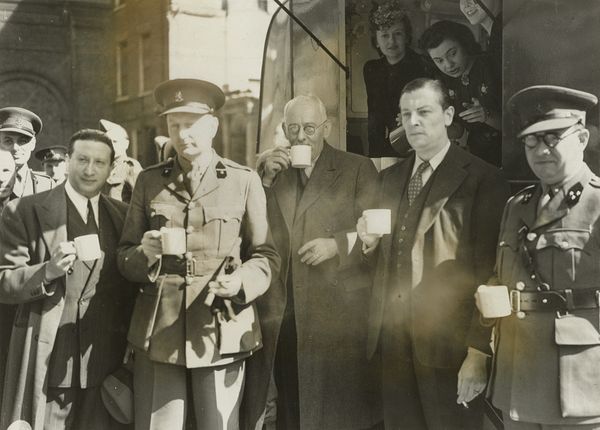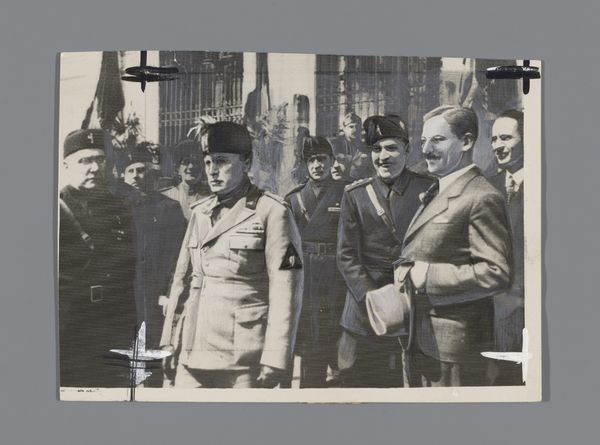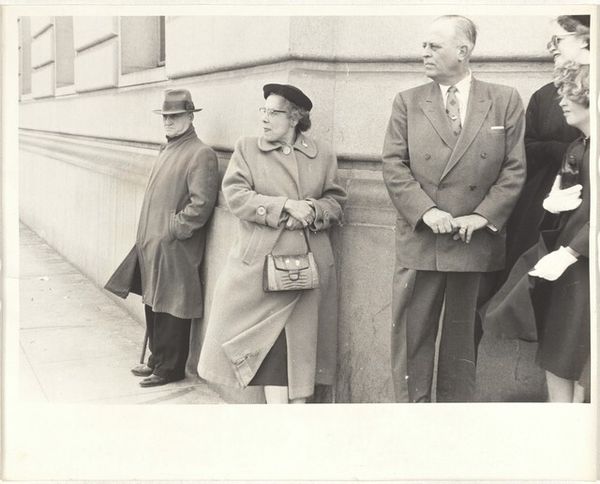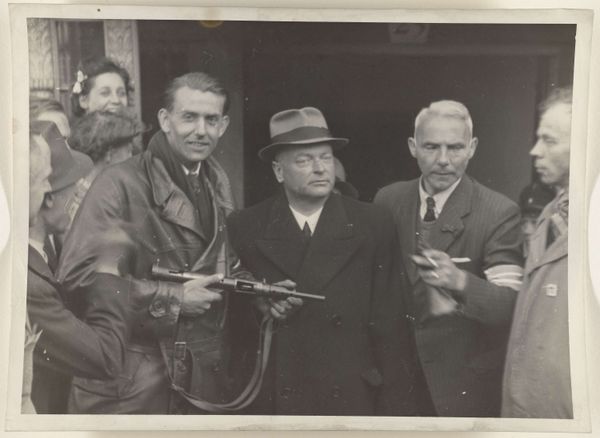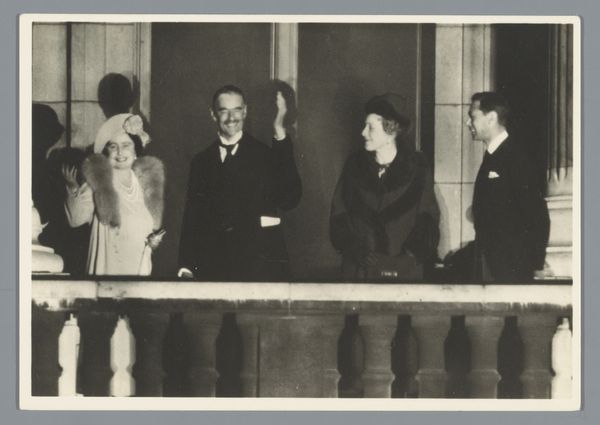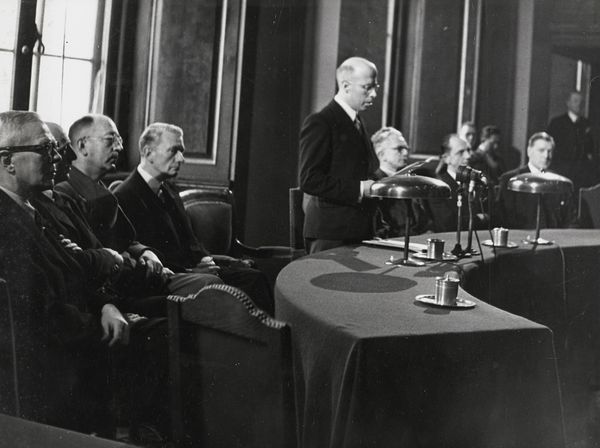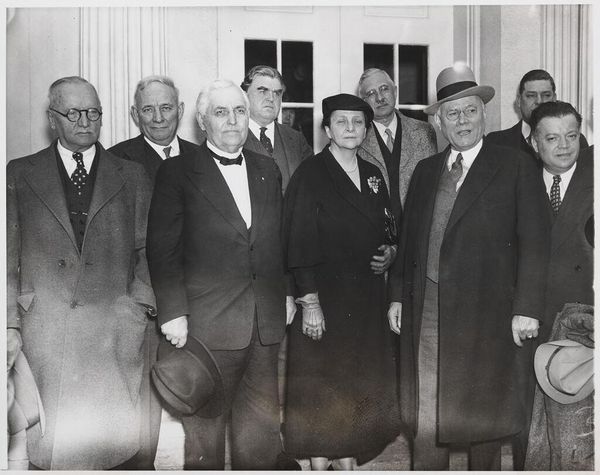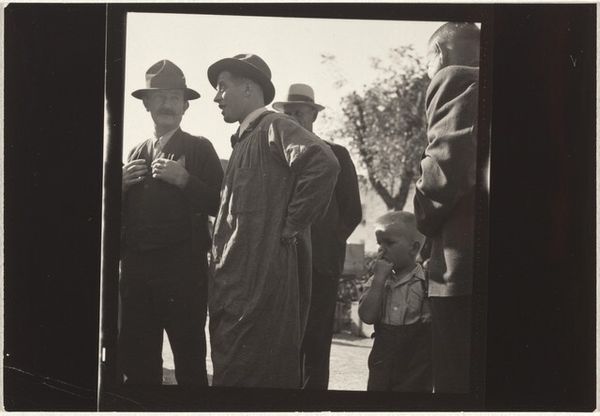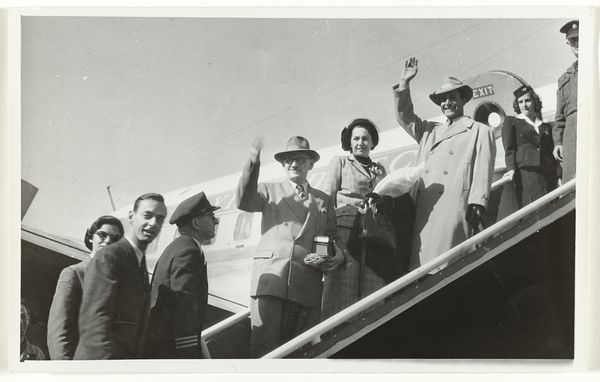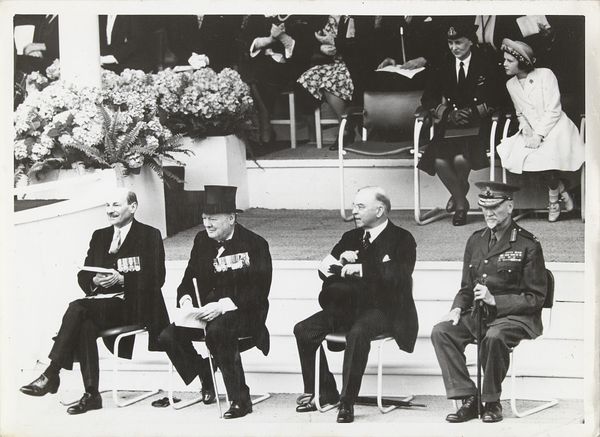
print, photography
#
portrait
# print
#
street-photography
#
photography
#
historical photography
#
group-portraits
#
modernism
#
realism
Dimensions: sheet: 20.2 x 25.2 cm (7 15/16 x 9 15/16 in.)
Copyright: National Gallery of Art: CC0 1.0
Editor: This is Robert Frank's "Parade--San Francisco," a black and white photograph from 1956. It feels almost staged, but it captures a moment in time. There's a formality, a certain stiffness to the people, especially the saluting soldier. How do you interpret this work within the context of its time? Curator: That stiffness you perceive is crucial. Frank was Swiss, an outsider observing America's performance of itself. The photograph is part of "The Americans" series, deeply critical of the post-war American Dream, its consumerism and subtle forms of oppression. What strikes you about the social dynamic represented? Editor: The people seem to be looking in different directions, lost in their own thoughts almost. They seem very separate and distant. Curator: Exactly. The fragmentation, both in composition and emotion, points to the fractured nature of American society beneath the façade of unity. The visible class divisions and racial tensions of the era are not directly depicted, yet the photo suggests that something isn't right beneath the surface, that hierarchies and exclusion exist. What impact does the black and white photography have on this impression? Editor: I guess the lack of color adds to that sense of detachment and alienation, doesn’t allow you to connect with them and softens the reality. Curator: It strips away the vibrant, idealized image America was projecting, exposing the underlying grayness and the complex reality. It makes you question the narrative. Editor: So, Frank uses the parade, usually a symbol of unity, to actually reveal the fragmented and somewhat disillusioned state of America in the 1950s. That gives me a new appreciation for his social commentary. Curator: And that understanding enables us to question and re-evaluate the myths that still shape contemporary American identity.
Comments
No comments
Be the first to comment and join the conversation on the ultimate creative platform.
